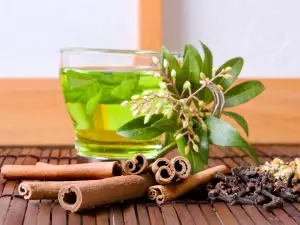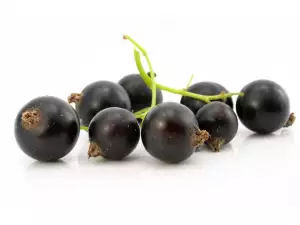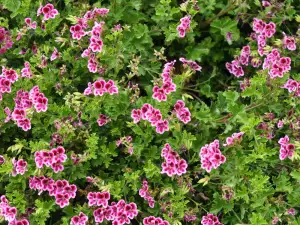Plants are one of the greatest treasures of nature, but each one is a very individualized kind with its own color, shape and flavor. Their chemical composition includes many compounds that are important not only for their vital functions, but also to the surrounding world.
We have to admit that everything in nature is so complex that there is perfect harmony and complementarity between species. One purpose of this balance is the greatest possible range. Nature has created a number of mechanisms to allow each organism to survive in its environment.
Phytoncides are highly active plant substances that have the ability to inhibit the growth of fungi, bacteria and some viruses. They were discovered in 1928 by Russian biologist Boris Tokin, who discovered the antibacterial substances in certain organs of higher plants. Tokin called his discovery phytoncides, which translates to a plant-killer / phyton - plant, caedo - killer /.
Nowadays phytoncides are established in over 3000 species of plants. They are very unstable, and in the pure state are crystals or liquid. It is assumed that the properties of the individual clean air plant depend on a group substances or only one substance - essential oils, balsams, resins, organic acids, alkaloids, tannins, glycosides and other series.
Phytoncides have been known since ancient times, and in Egypt, the ancients used them for mummification. Their chemical composition is not completely solved, but at the expense of this, their functions are well studied. Different parts of the plant contain different amounts of phytoncides. Their antibacterial activity is more intense than in a direct contact of the plant with bacteria.

Sources of phytoncides
Blossoms are the period of most intense release of Sources, but some plants release them permanently. These are leguminous plants, lavender, peppermint, birch, garlic, juniper and others.
Garlic - a typical example of a plant that provides phytoncides continuously, but the most powerful supply cycle is during ripening of the bulbs. It is the best time to use it as a remedy. Garlic is one of the most popular folk remedies for the treatment of serious diseases, hypertension and atherosclerosis. It is proved that garlic reduces the level of triglycerides and cholesterol, lowering arterial blood pressure, and acts as an antidote for lead poisoning. Recent studies suggest that positive influence on the thyroid gland. Note that the degree of separation of phytoncides of garlic is reduced by drying it.
St. John`s Wort - clean air coming into its composition has a broad antibacterial spectrum. It is used in the treatment of duodenal ulcer, because it stimulates the regenerative processes in the lining.

Rosemary - contains phytoncides that stimulate and strengthen the overall immune system. Especially useful after a long illness. Improves appetite, stimulates gastric and biliary secretion. Has a very broad spectrum of antimicrobial activity against staphylococci, streptococci and salmonella.
Horseradish - a classic example of the presence of highly active phytoncides. The volatile substances from it have an even wider range of action, compared to garlic. It has very powerful anti-microbial properties.
Salvia - it has an antiseptic effect on the number of pathogenic bacteria. Simultaneously it possesses a secretolytic and anti- inflammatory action. It is widely used in respiratory and gastro-intestinal diseases.
Pine - pine tops / especially during flowering / are extremely rich in phytoncides who have expressed antimicrobial properties. Syrup extract of copper and pine tips is extremely valuable for lung diseases, in particular- pulmonary tuberculosis.
Other species that are extremely rich in phytoncides are, onions, potatoes, nettle, tomatoes, carrots, red peppers, apples, strawberries, turnips, grapes, citrus fruits. Phytoncides come from walnut leaves, lavender, linden, pine and cedar, wormwood, lilac, horse chestnut, blackthorn, eucalyptus and many others.

Benefits of Phytoncides
Inhaling of aromas emitted by plants phytoncides has a positive effect on the lungs, also has strong anti-allergic and anti-inflammatory in nature. Phytoncides have the ability to stop the reproduction and growth of microorganisms, like the not- so harmless synthetic antibiotics.
Some phytoncides act advantageously on the skin and therefore it become an indispensable ingredient in a number of cosmetic products. They have beneficial effects on the digestive system. In recent years, it was found that cinnamon oil has phytoncides that destroy toxins produced by mold on bread, salami and meat products, which are carcinogenic.
















Comments